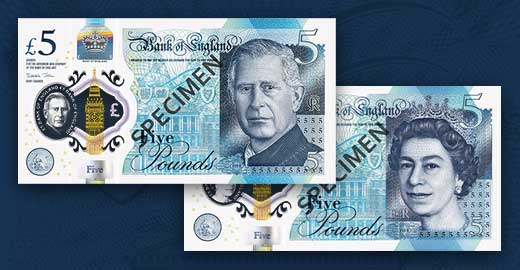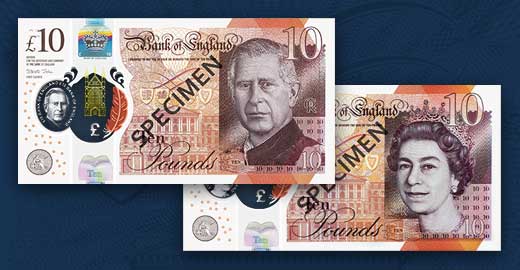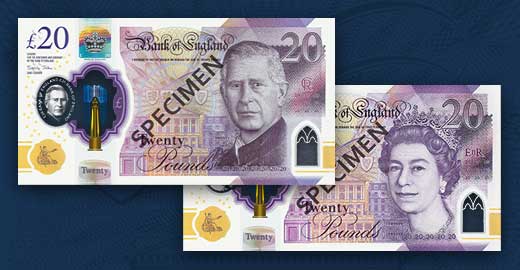15 July 2019
Alan Turing announced as the face of the £50 note
23 June 2021
Current £50 note issued
5 June 2024
Issuance of banknotes featuring the portrait of King Charles III
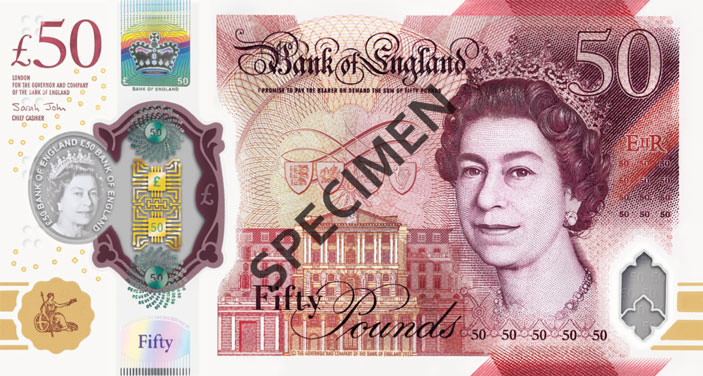
Front of the Queen Elizabeth II note
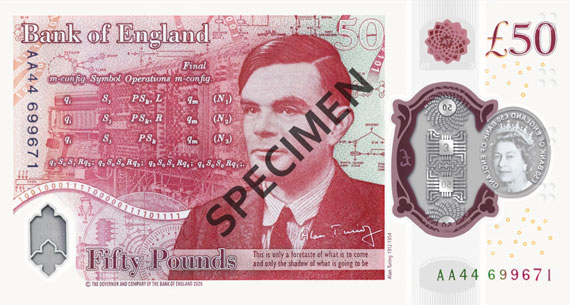
Back of Queen Elizabeth II note
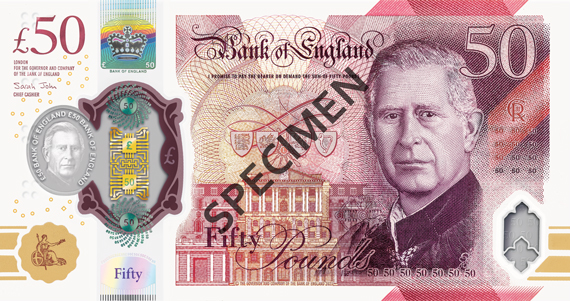
Front of the King Charles III note
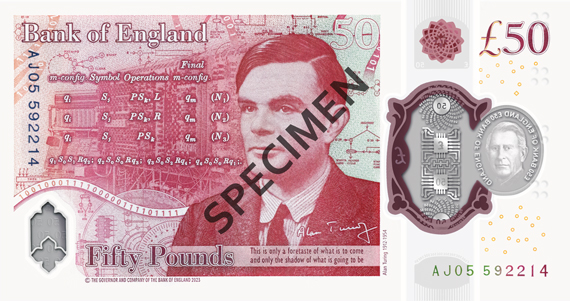
Back of the King Charles III note
Explore our £50 note
Drag the note or use the scrollbar below to explore in 360°
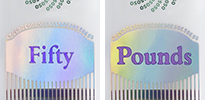
Hologram
The word changes between ‘Fifty’ and ‘Pounds’ when the note is tilted.
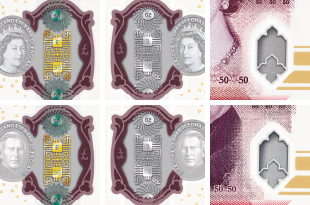
See-through windows
The foil is gold and green on the front and silver on the back. Within the two gold foil squares, the image changes between '50' and a '£' symbol when the note is tilted.

The monarch’s portrait
A portrait of the monarch is printed on the window with ‘£50 Bank of England’ printed twice around the edge.
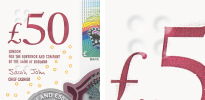
Raised dots
There are four clusters of raised dots in the top left hand corner to help blind and partially sighted people identify the value of the note.
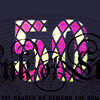
Ultra-violet number
Under ultraviolet light, the number ‘50’ appears in bright red and green, against a duller background.
Size
The higher the value of a note, the larger it is. This note is approximately 146mm x 77mm.
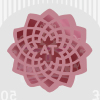
Red foil patch
A metallic, red foil patch contains the letter 'AT'.
Historical character
Alan Turing's portrait is based on the photo owned by the National Portrait Gallery.
Artwork
The design on the reverse of the note celebrates Alan Turing and his pioneering work with computers. It features Images of a matrix table and mathematical formula, ACE Pilot Machine, Binary code, Bombe technical drawings and technical drawings from the ACE Progress Report.
Quote
"This is only a foretaste of what is to come and only the shadow of what is going to be" is a quote from Alan Turing, given in an interview to The Times newspaper on 11 June 1949.
Signature
Turing's signature has been taken from the visitor's signature book on display at Bletchley Park Trust.
Copyright symbols
The international copyright symbol is on the front and back of the note.
Unique numbering
The numbers and letters in the vertical serial number are all the same height and colour. The horizontal serial number is multi-coloured and increases in height from left to right.
See-through window
A second, smaller window is in the bottom corner.
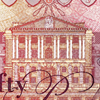
Print quality
The printed lines and colours on the note are sharp, clear and free from smudges or blurred edges.
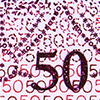
Print quality
The value of the note is written in tiny letters and numbers below the monarch’s portrait. This is visible with a magnifying glass.
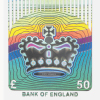
Silver foil patch
A silver foil patch contains a 3D image of the coronation crown.

Raised print
You can feel raised print on the words ‘Bank of England’ and over the smaller window in the bottom right corner.
Key security features
Focus on these two key security features to help confirm that your notes are genuine:
Hologram

Tilt the note from side to side. Check the words change between 'Fifty' and 'Pounds'.

Within the two gold foil squares on the front of the £50 note, the images change between ‘50’ and a ‘£’ symbol when the note is tilted.
See through windows

Look at the metallic image over the main window. Check the foil is gold and green on the front of the note and silver on the back. Look for a second, smaller window in the bottom corner of the note.
Other security features
Red foil patch

A metallic, red foil patch contains the letters 'AT'. You will find this on the back of the note, directly behind the silver crown on the front of the note.
The monarch's portrait in the see-through window

A portrait of the monarch is printed on the window with '£50 Bank of England’ printed twice around the edge.
Silver foil patch

A silver foil patch contains a 3D image of the coronation crown. You will find this above the main see-through window on the front of the note.
Feel of polymer and raised print

The note is printed on polymer, which is a thin and flexible plastic material. On the front of the note, you can feel raised print. For example, on the words ‘Bank of England’ and in the bottom right corner, over the smaller window.
Print quality

The printed lines and colours on the note are sharp, clear and free from smudges or blurred edges. If you use a magnifying glass, you will see the value of the note written in small letters and numbers below the monarch's portrait.
Ultraviolet number

Under a good quality ultraviolet light, the number '50' appears in bright red and green on the front of the note, against a duller background.
Design features
Tactile feature
On the front of the note (the side with raised print), there are four clusters of raised dots in the top left hand corner. This tactile feature helps blind and partially sighted people identify the value of the note.
Size
The higher the value of a note, the larger it is. This note is approximately 146mm x 77mm.Unique numbering
A unique serial number is printed horizontally and vertically on the back of the note. The horizontal number is in the bottom right corner. It is made up of multi-coloured letters and numbers, which increase in height from left to right. The vertical number runs down the left-hand side and the numbers and letters are the same height and colour.Copyright symbols
The international copyright symbol is included on the front and back of the note, below the ‘Fifty Pounds’ text.Historical character
Alan Turing's portrait is based on a photo taken in 1951 by Elliott & Fry which is part of the Photographs Collection at the National Portrait Gallery.
Alan Turing provided the theoretical underpinnings for the modern computer. While best known for his work devising code-breaking machines during WWII, Turing played a pivotal role in the development of early computers first at the National Physical Laboratory and later at the University of Manchester. He set the foundations for work on artificial intelligence by considering the question of whether machines could think. Turing was homosexual and was posthumously pardoned by HM Queen Elizabeth II having been convicted of gross indecency for his relationship with a man. His legacy continues to have an impact on both science and society today.
Artwork
The design on the reverse of the note celebrates Alan Turing and his pioneering work with computers. It features:
- A mathematical table and formulae from Turing’s seminal 1936 paper “On Computable Numbers, with an application to the Entscheidungsproblem” Proceedings of the London Mathematical Society. This paper is widely recognised as being foundational for computer science.
- The Automatic Computing Engine (ACE) Pilot Machine which was developed at the National Physical Laboratory as the trial model of Turing’s pioneering ACE design. The ACE was one of the first electronic stored-program digital computers.
- Ticker tape depicting Alan Turing’s birth date (23 June 1912) in binary code.
- Technical drawings for the British Bombe, the machine specified by Turing and one of the primary tools used to break Enigma-enciphered messages during WWII.
- The flower-shaped red foil patch on the back of the note is based on the image of a sunflower head linked to Turing’s morphogenetic (study of patterns in nature) work in later life.
- A series of background images, depicting technical drawings from The ACE Progress Report.
Quote
"This is only a foretaste of what is to come and only the shadow of what is going to be" is a quote from Alan Turing, given in an interview to The Times newspaper on 11 June 1949.Signature
Turing's signature has been taken from the visitor's signature book on display at Bletchley Park Trust in 1947, where he worked during WWII.Resources
Download our free education materials to help check your banknotes.
- How to check your banknotes A5 booklet (PDF 6.3MB)
- How to check your banknotes A5 booklet (Welsh) (PDF 6.3MB)
- How to check your banknotes A3 poster (PDF 2.2MB)
- How to check your banknotes A3 poster (Welsh) (PDF 2.2MB)
You can also order our free education materials online:
Watch our short film showing the key security features on the £50 note
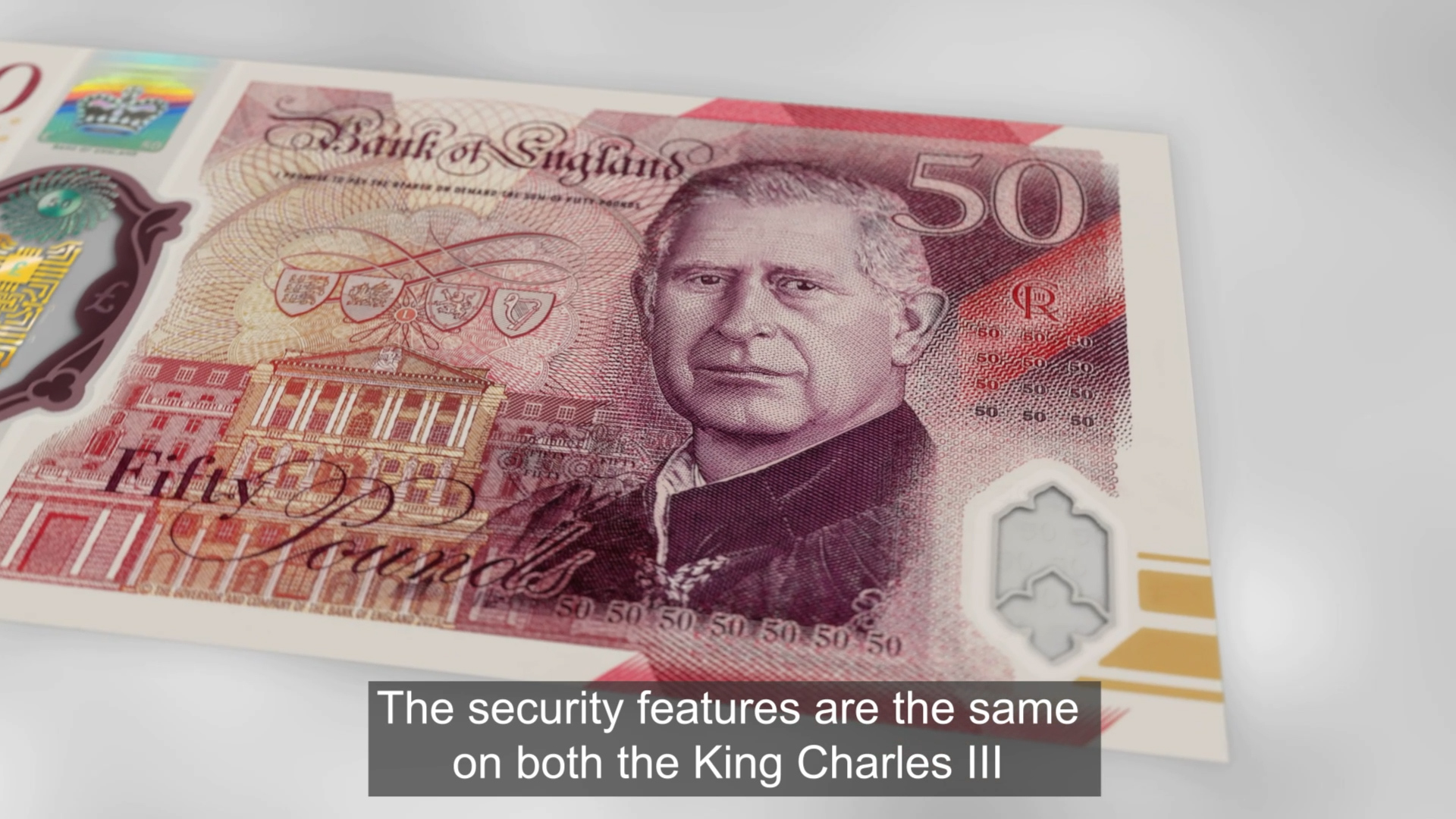
GCHQ competition
Alan Turing is perhaps best known for his code breaking work during World War 2, and in recognition of this we have collaborated with GCHQ to design a series of puzzles, based on the Turing £50 note design. Test your code breaking skills where you will have to solve 11 puzzles, each based on one of the features on the note. Solve all 11, and you will have all the clues you need to solve the final puzzle. Good luck!
Exchanging old notes
This note replaces our paper £50 note which was withdrawn from circulation after 30 September 2022.
You may be able to deposit withdrawn notes at your own bank or with the Post Office. Alternatively, you can exchange withdrawn banknotes with selected Post Office branches or with the Bank of England. There is no deadline to exchange old banknotes with the Bank of England.

